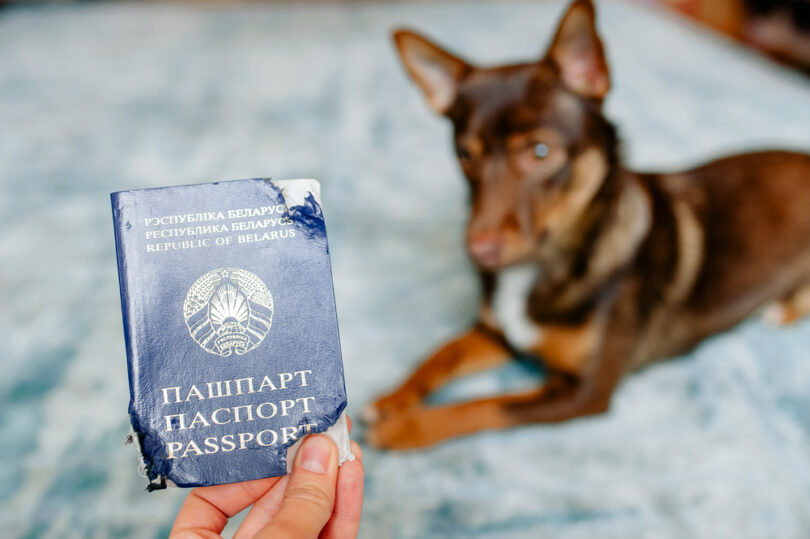It’s every traveler’s worst nightmare. You have arrived abroad or you are leaving on that Caribbean honeymoon, only to be denied boarding or entry into the country because your passport is in bad shape and unfit for travel. A damaged passport can cause serious issues, and usually costly ones at that. You might not even know your passport is considered damaged, or if you do, you may hold your breath and count your lucky stars every time you step up to the customs officer to present your book.
If you’re worried you might not pass through customs because your most important travel documentation is tattered and torn, from how to determine the level of detriment to how to replace your book, here’s everything you need to know about damaged passports.

Is My Passport Really Damaged?
If you are one of the many people that don’t know where to start if you have a damaged passport, first thing’s first: you have to determine if it is in fact damaged. Look at the book cover and the page with personal information and your photo. If these appear ruined in any way, you’ll probably need a new passport. Other signs of damage include water damage, a significant tear or tears, torn out or missing visa pages, and unofficial markings. Your passport might not be considered damaged if you are just noticing normal wear and tear such as the fanning of pages or the bend of the passport.
What’s Considered a Damaged Passport?
What constitutes your beloved travel document damaged enough for you to need a replacement is relatively subjective and can vary from destination to destination. Our advice is to go ahead and apply for a replacement passport as soon as there are any visible damages to the book, whether they’re on the covers, inside or both. If you’re still confused, here are some examples of types of damage that will definitely require you to get a new passport:
- Tears on the covers and/or pages
- Frayed or loose binding
- Faded pages
- Water damage
- Radio Frequency Identification (RFID) chip damage
What If I Try to Travel with a Damaged Passport?
Damaged passports are considered invalid, which makes it a tad bit hard for you to leave the country or get into another one too. For the easy-going, you might think “well, my flight booking is done, so I’ll be just fine” and not be too worried about traveling with a damaged passport, but…you might want to rethink those notions. While one country could allow you to enter with your damaged passport, another could deny you entry. Traveling with a damaged passport opens you up to being detained in a foreign country or even sent back home. You also might not even take off. As you try to board your flight out of town, you could be denied boarding in the first place. Both scenarios translate into costly measures to either reschedule your trip or expedite a new passport.
How Can I Replace a Damaged Passport?
Unfortunately, you can’t fix a damaged passport with a little tape and glue. If you have determined your passport is, in fact, damaged, it will have to be replaced. Although you might be used to renewing your passport by mail, in the case of a damaged passport, you have to apply for a new passport in person at a Passport Acceptance Facility or at a passport agency. To apply you’ll need:
- Your damaged passport
- Passport application form
- Statement of Damage – this is a statement explaining the battery to your passport and how it happened.
- DS-11 Form (Application for U.S. passport)
- Citizenship evidence (e.g. birth certificate)
- A photocopy of the evidence of citizenship
- A photo ID
- A passport photo
- And money for fees
In the case that you’re abroad when the damage occurs, you’ll need to find the nearest U.S. embassy in order to start the replacement process. If you need to expedite the process, you’ll have to pay up, even more, to get your passport sooner.
You Might Also Enjoy: Everything You Need to Know About Renewing Your U.S. Passport!

Keeping Your Passport Damage Free
If you travel frequently, your passport can be more susceptible to damage. Here are some things you can do to avoid future damage to your new passport.
- As obvious as this sounds, be sure to stash your passport in a place that’s far, far away from pets and children.
- Invest in a case for the passport that will protect it from spills and tears in your luggage. It’s a good idea to get a waterproof cover or bag to keep your passport safe from water damage and humidity.
- Shoe-string budget keeping you from that shiny passport case you want? An affordable way to keep your passport safe is to put it into a Ziploc bag as an extra layer of protection.
- If you’re someone that likes having your passport on you at all times, but you’re headed to a destination that is known to have inclement weather or is in a climate that screams “you’ll need damage control!” (think: beaches, snowy destinations, etc.) make clear, colored copies of your passport to keep with you instead of bringing the real thing. This won’t just protect your precious travel document but you’ll also have something to help you should your passport be stolen or lost at any point in your trip!
- Lastly, you can merely avoid the damaged-passport fiasco by inspecting your passport well before you are set to leave on an international trip. If you do discover a problem, you’ll be able to get a new passport without time pressure or additional costs.
FAQs:
Q: Can I travel with a damaged passport?
A: While it is not advisable to travel with a damaged passport, the decision ultimately depends on the severity of the damage and the immigration regulations of the destination country. It’s always best to contact the embassy or consulate of the country you plan to visit to determine if your damaged passport will be accepted. However, it’s generally recommended to replace a damaged passport before embarking on any international travel.
Q: How long does it take to receive a replacement passport?
A: The processing time for a replacement passport can vary depending on factors such as your location and the backlog of applications at the passport office. In general, it can take anywhere from a few days to a few weeks to receive your new passport. It’s advisable to contact your local passport office or check their website for more accurate information regarding processing times.
Q: Will I receive a new passport with the same expiration date as my damaged one?
A: When you apply for a replacement passport due to damage, the new passport will typically be issued with the same expiration date as your damaged passport. The purpose of replacing a damaged passport is to provide you with a valid travel document without altering the validity period.
Q: What should I do if my damaged passport contains valid visas or entry stamps?
A: If your damaged passport contains valid visas or entry stamps, it’s important to preserve these documents as they hold significant value. When you apply for a replacement passport, inform the passport office about the existing visas or entry stamps. They will guide you on the necessary steps to transfer them to your new passport, ensuring that you retain the necessary travel permissions.
You can visit the U.S. State Department website for more details on replacing a damaged passport.
Have you ever experienced a damaged passport situation? Share your experience with us in the comments below!









